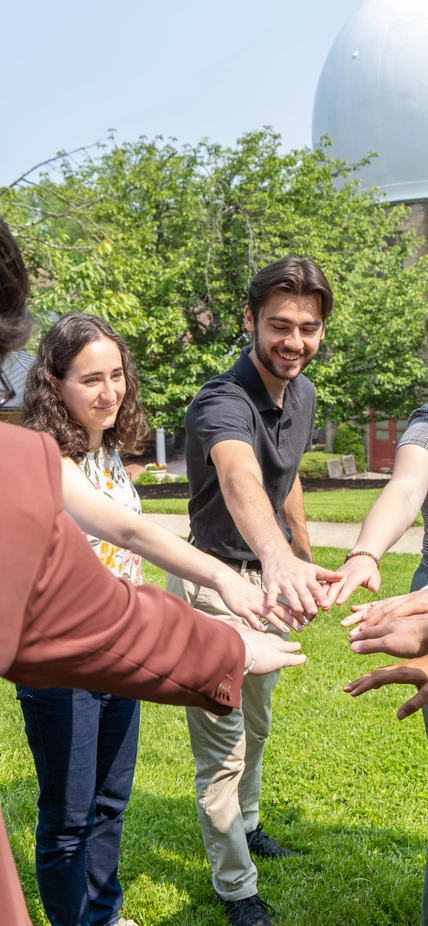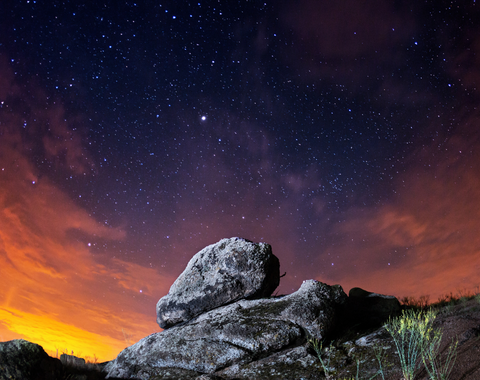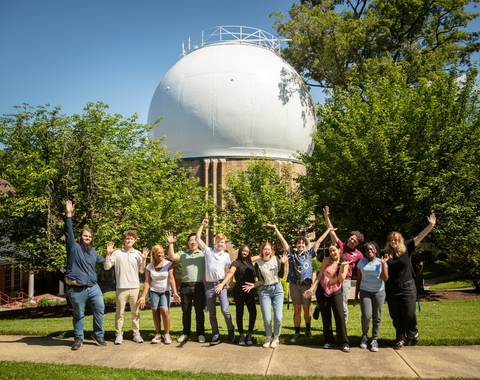What do you get when you mix stardust, rock samples, and a dozen bright undergrads? Every summer, the Carnegie Science Earth and Planets Laboratory transforms into a training ground for the next generation of Earth and space explorers—right here in Washington, D.C.!
Welcome to EPIIC—the Earth and Planetary Science Interdisciplinary Internship at Carnegie Science. Funded primarily through the National Science Foundation’s Research Experiences for Undergraduates (REU) program (with additional support from the late Bevan French and the AEThER project), this full-time, paid research experience brings together 12 exceptional students from across the country to explore the frontiers of astronomy, planetary science, astrobiology, geochemistry, and beyond.
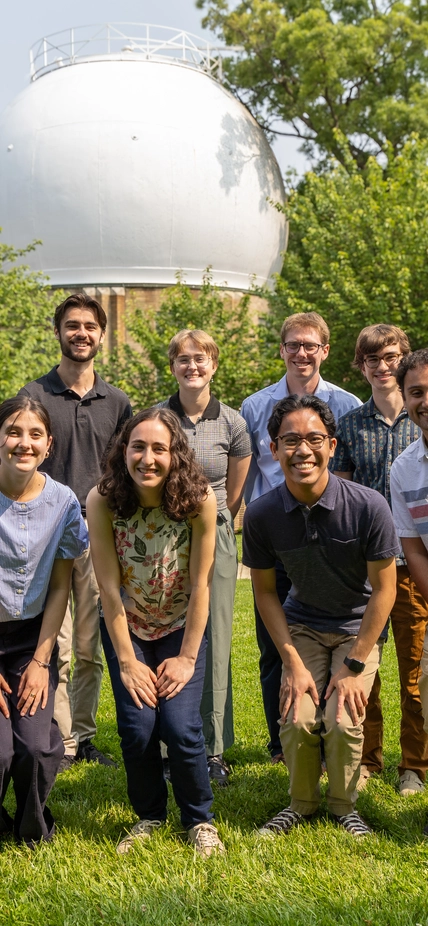
Over the next ten weeks, EPIIC interns will work side by side with world-class mentors to tackle fundamental scientific questions like:
- Can we detect signs of life on other worlds?
- How do planets, including our own, form and evolve?
- What secrets are hidden in meteorite impacts?
- How are material properties shaped under extreme temperatures and pressures?
- How can the rock records inform us of early Earth?
- How are fluids and volatiles transported in the Earth’s interior?
From analyzing starlight and modeling exoplanets to simulating deep-Earth conditions and decoding the chemistry of ancient asteroids, the EPIIC cohort will gain hands-on experience with real data, real instruments, and real discovery.
Meet the 2025 EPIIC Interns
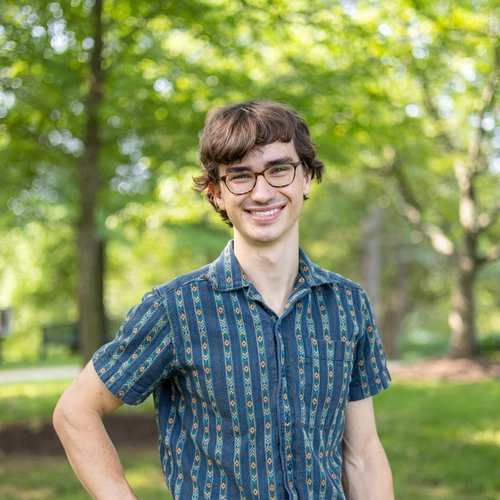
Charlie Barker
Amherst College | Physics
Project: Thermal Conductivity of Earth’s Minerals and Alloys
A sophomore Physics major at Amherst College, Charlie Barker is working with Tyler Perez and Alex Goncharov to investigate the Thermal Conductivity of Earth’s Minerals and Alloys. His project uses laser-heated diamond anvil cell techniques to measure thermal transport properties of planetary materials under extreme pressure-temperature conditions relevant to the Earth's core and mantle.

Michael Burch
Harvey Mudd College | Computer Science and Physics
Project: Planetary Informatics Exploration
Michael Burch is a freshman at Harvey Mudd College studying Computer Science and Physics. Under the mentorship of Anirudh Prabhu and Michael Wong, he is contributing to the Planetary Informatics Exploration project, applying machine learning techniques to exoplanet datasets to identify trends in planetary system architectures and predict new planetary candidates.
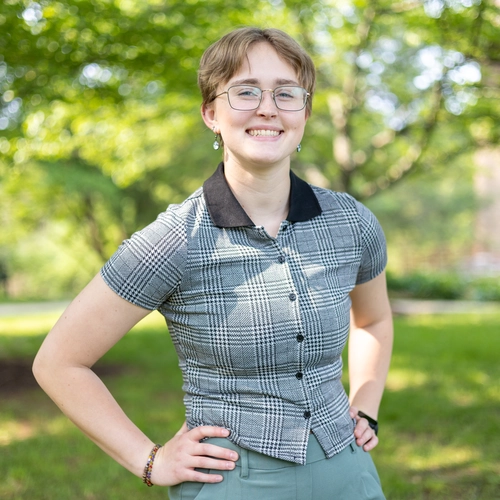
Em Dobberfuhl
University of Wisconsin–Madison | Astronomy–Physics
Project: Looking for Life on Ancient Earth and Across the Solar System
A sophomore Astronomy–Physics major at the University of Wisconsin–Madison, Em Dobberfuhl is working with Michael Wong, George Cody, and Robert Hazen on the project Looking for Life on Ancient Earth and Across the Solar System. Dobberfuhl is analyzing carbon-rich samples using pyrolysis–gas chromatography–mass spectrometry to support the development of machine learning biosignature detection models.
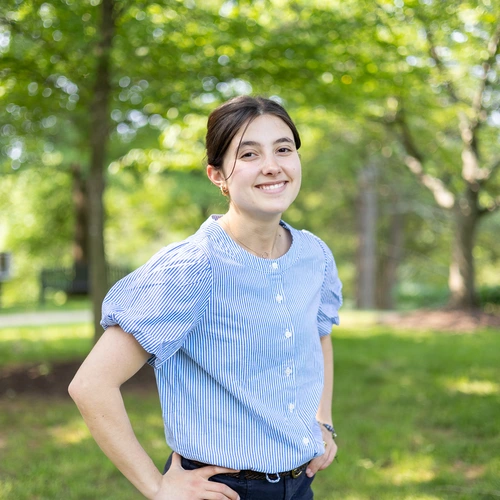
Natalia Freedman
Vanderbilt University | Music Performance & Earth and Environmental Sciences
Project: Rock Clocks for Earth History
Natalia Freedman, a sophomore at Vanderbilt University majoring in Music Performance and Earth and Environmental Sciences, is working with Jennifer Kasbohm on Rock Clocks for Earth History. She is conducting geochronological analysis of volcanic rocks and deep-sea sedimentary records to better understand the timing and impact of environmental change in the geological past.

Kate Halpin
Binghamton University | Geology
Project: Micro-materials as Windows into Deep-Earth Processes
A junior Geology major at Binghamton University, Kate Halpin is working with Oded Elazar on the project Micro-materials as Windows into Deep-Earth Processes. She is using geochemical and electron microscopy techniques to study mineral inclusions in diamonds and gain insight into fluid evolution and element cycling within the Earth's upper mantle.

Miriam Herron
University of Rochester | Geological Sciences
Project: The Fate of Carbon During Impact
Miriam Herron is a sophomore Geological Sciences major at the University of Rochester. She is working with Andrew Steele on The Fate of Carbon During Impact, using Raman spectroscopy and electron microscopy to examine the transformation and preservation of carbonaceous materials in impact-processed terrestrial rocks.
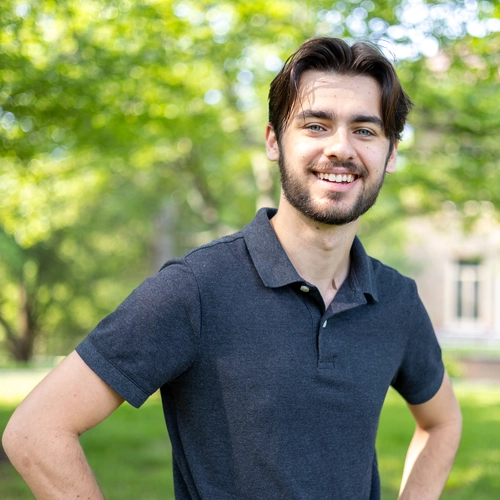
Jonah Karpf
Florida State University | Chemistry
Project: Volatiles in the Earth’s Interior
A junior Chemistry major at Florida State University, Jonah Karpf is working under the guidance of Dionysis Foustoukos on the project Volatiles in the Earth’s Interior. He is conducting high-pressure experiments to study the solubility and partitioning of nitrogen and hydrogen sulfide in silicate and carbonate melts under upper mantle conditions.

Rian Reichel
McGill University | Physics
Project: Low-pressure, High-Temperature Superconductivity in Novel Light-Element Systems
Rian Reichel, a sophomore Physics major at McGill University, is working with Tim Strobel on Low-pressure, High-Temperature Superconductivity in Novel Light-Element Systems. His research focuses on synthesizing and characterizing light-element compounds, such as hydrides, that may exhibit high-temperature superconductivity at near-ambient pressures.

Cat Sakin
Rochester Institute of Technology | Mechanical Engineering
Project: Dust and Destiny: Investigating the Structure of Debris Disks
Cat Sakin is a junior Mechanical Engineering student at the Rochester Institute of Technology. Under the mentorship of Daniel Lin and Alycia Weinberger, she is studying Dust and Destiny: Investigating the Structure of Debris Disks, using radiative transfer models and multi-wavelength observations to explore how dust structures reveal planetary system evolution.

Bryan Tejano
Georgia Institute of Technology | Physics
Project: Exoplanetary Baking: Using Elements to Understand Planet Populations
A freshman Physics major at Georgia Institute of Technology, Bryan Tejano is working with Kiersten Boley on Exoplanetary Baking: Using Elements to Understand Planet Populations. His project explores how stellar elemental abundances influence the formation and thermal characteristics of rocky exoplanets.
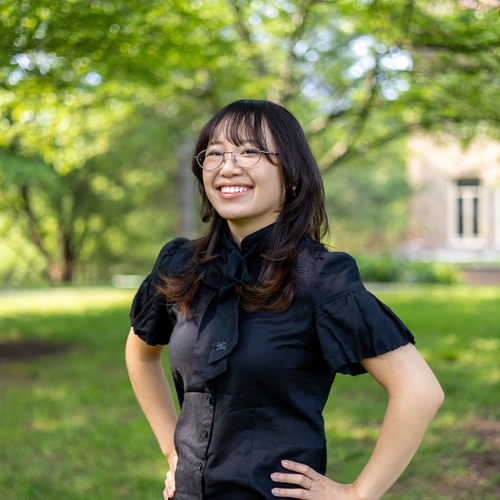
Nhi Tu
Virginia Commonwealth University | Biology (minor in Chemistry)
Project: Extraterrestrial Organic Carbon in Primitive Solar System Objects
Nhi Tu, a junior Biology major with a minor in Chemistry at Virginia Commonwealth University, is conducting research with George Cody on the project Extraterrestrial Organic Carbon in Primitive Solar System Objects (Asteroids and Comets). She is simulating the thermal alteration of organic materials in asteroid analogs and using spectroscopic methods, including nuclear magnetic resonance (NMR), to trace their molecular evolution.
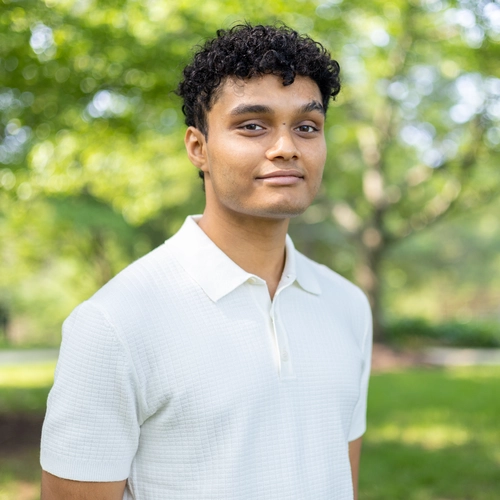
Nachiket Yadav
The University of Texas at Austin | Astronomy and Physics
Project: Solving the Metallicity Mystery for M-dwarfs
Nachiket Yadav, a rising senior at University of Texas at Austin, is working with Shubham Kanodia on Solving the Metallicity Mystery for M-dwarfs. He is using new techniques and analysis tools to analyze high-resolution spectra of the most common type of stars in the Galaxy—M-dwarfs—to estimate their properties, particularly their metallicity, i.e., their composition.
The Earth and Planetary Science Interdisciplinary Internship at Carnegie Science (EPIIC) is a full-time, in-person, paid 10-week research internship and professional development program at the EPL campus in Washington, DC.
